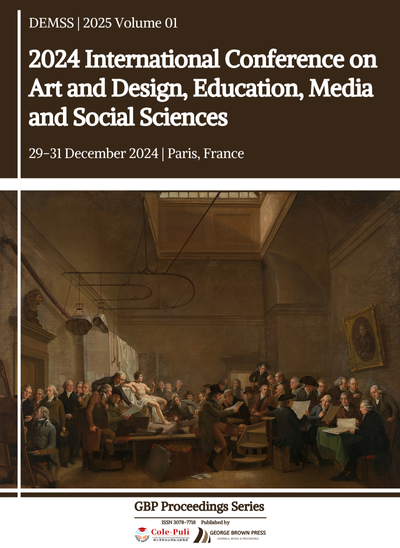Research on Road Traffic Sign Detection and Recognition Technology
DOI:
https://doi.org/10.71222/wbw9v343Keywords:
road traffic signs, detection and recognition, deep learning, image processing, intelligent transportation systems, autonomous driving, technological challengesAbstract
With the development of intelligent transportation systems (ITS) and autonomous driving technologies, road traffic sign detection and recognition have become increasingly important in the fields of traffic safety, road management, and vehicle automation. Road traffic signs not only provide crucial information for drivers but also offer essential perception data for autonomous vehicles within intelligent transportation systems. This paper systematically reviews the current research progress in road traffic sign detection and recognition technology, analyzing the classification, visual features of signs, and the challenges faced in complex traffic environments. By comparing traditional image processing methods with advanced deep learning-based technologies, this paper discusses the advantages and disadvantages of sign detection and recognition in different application scenarios, and explores future technological development trends. Finally, the paper provides an outlook on the research directions in this field, aiming to provide theoretical support for future technological improvements and application promotion.
References
1. A. Alam and Z. A. Jaffery, "Indian traffic sign detection and recognition," Int. J. Intell. Transp. Syst. Res., vol. 18, no. 1, pp. 98–112, 2020, doi: 10.1016/j.ijtst.2022.06.002.
2. R. K. Megalingam, et al., "Indian traffic sign detection and recognition using deep learning," Int. J. Transp. Sci. Technol., vol. 12, no. 3, pp. 683–699, 2023, doi: 10.1016/j.ijtst.2022.06.002.
3. R. Lahmyed, M. El Ansari, and Z. Kerkaou, "Automatic road sign detection and recognition based on neural network," Soft Comput., vol. 26, no. 4, pp. 1743–1764, 2022, doi: 10.1007/s00500-021-06726-w.
4. Y. Zhu and W. Q. Yan, "Traffic sign recognition based on deep learning," Multimed. Tools Appl., vol. 81, no. 13, pp. 17779–17791, 2022, doi: 10.1007/s11042-022-12163-0.
5. A. Hechri and A. Mtibaa, "Two-stage traffic sign detection and recognition based on SVM and convolutional neural networks," IET Image Process., vol. 14, no. 5, pp. 939–946, 2020, doi: 10.1049/iet-ipr.2019.0634.
6. I. S. B. Md Isa, J. Y. Choy, and N. L. A. B. M. Shaari, "Real-time traffic sign detection and recognition using Raspberry Pi," Int. J. Electr. Comput. Eng., vol. 12, no. 1, p. 331, 2022, doi: 10.11591/ijece.v12i1.pp331-338.
7. M. Sudha and Dr. V. P. G. Pushparathi, "Traffic sign detection and recognition using RGSM and a novel feature extraction method," Peer-to-Peer Netw. Appl., vol. 14, no. 4, pp. 2026–2037, 2021, doi: 10.1007/s12083-021-01138-x.
8. R. Zhang, et al., "Traffic sign detection based on the improved YOLOv5," Appl. Sci., vol. 13, no. 17, p. 9748, 2023, doi: 10.3390/app13179748.
9. N. Ahmed, et al., "Traffic sign detection and recognition model using support vector machine and histogram of oriented gra-dient," Int. J. Inf. Technol. Comput. Sci., vol. 13, no. 3, pp. 61–73, 2021, doi: 10.5815/ijitcs.2021.03.05.
10. H. Wan, et al., "A novel neural network model for traffic sign detection and recognition under extreme conditions," J. Sens., vol. 2021, no. 1, Article ID 9984787, 2021, doi: 10.1155/2021/9984787.










